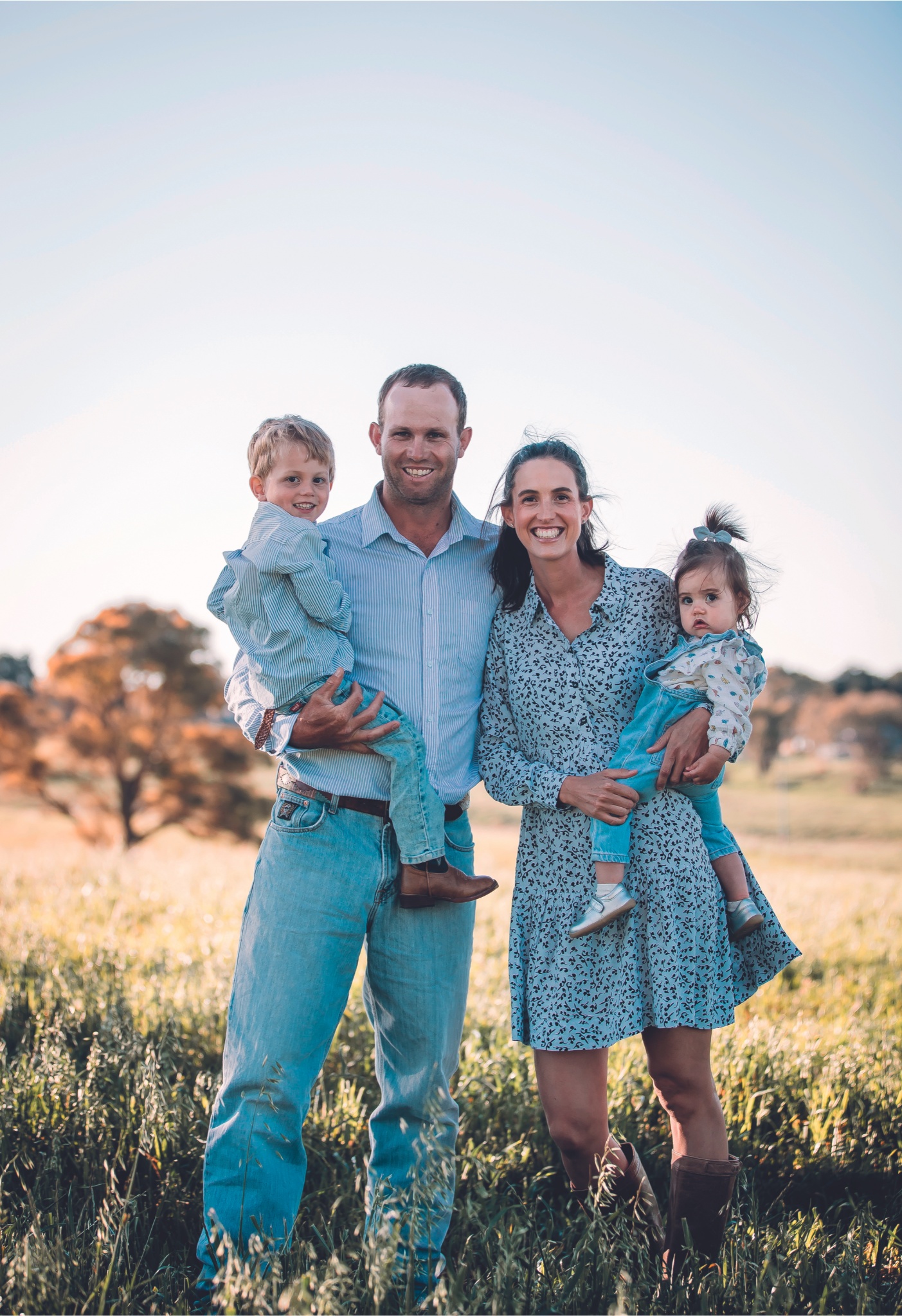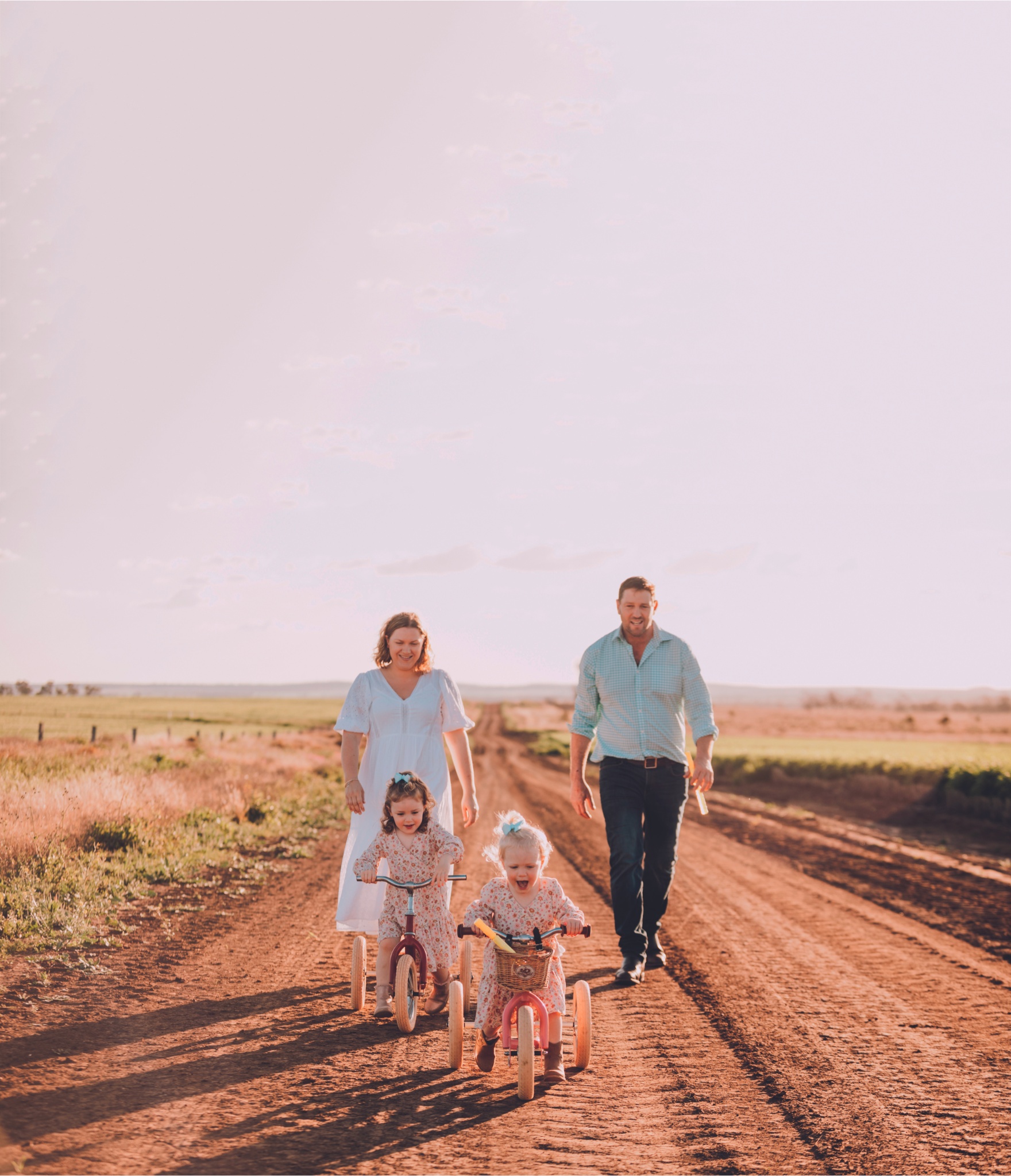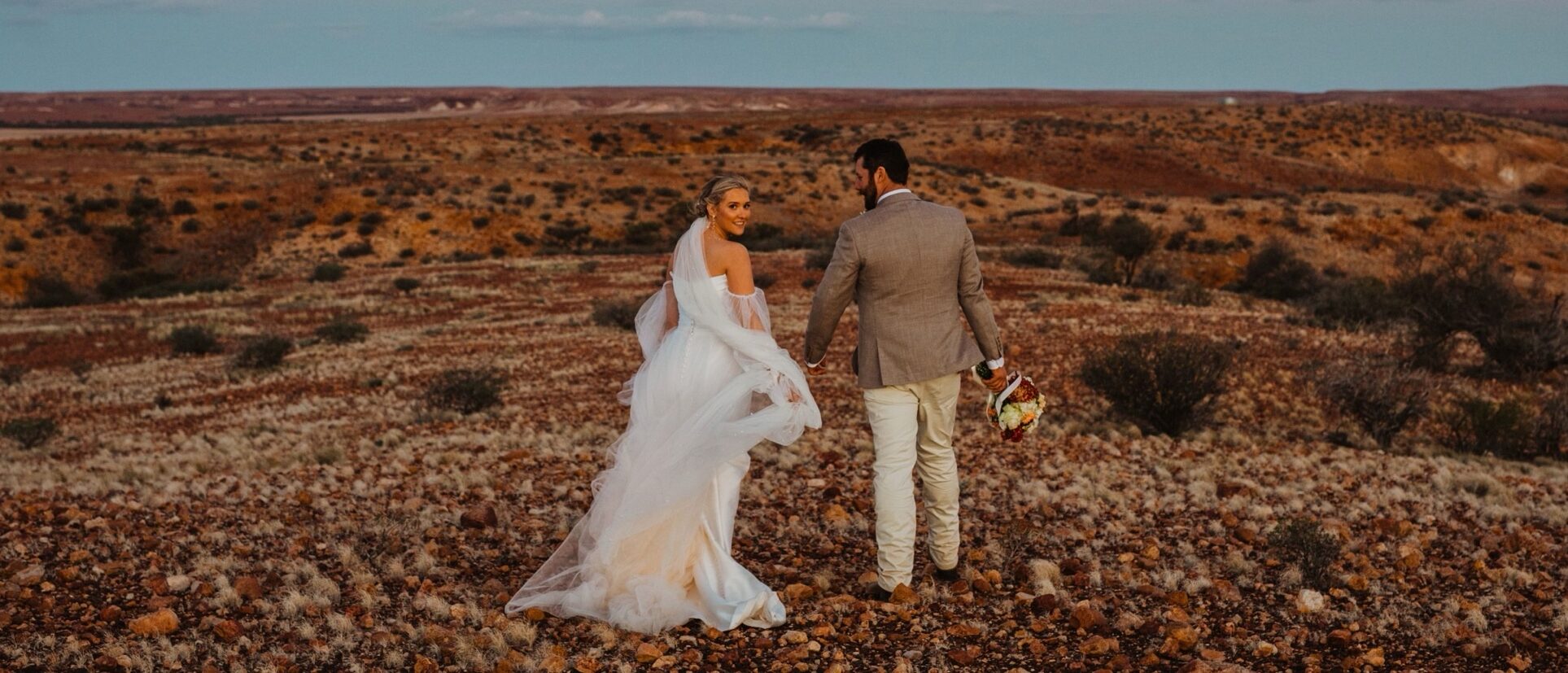Sign up to our mailing list for the best stories delivered to your inbox.
They share their stories in the hope that others will find comfort in a time of unfathomable grief.
WORDS EMILY HERBERT PHOTOGRAPHY EM PENDERGAST, CAITLYN POWER


The 32-year-old dietitian had spent the week organising, gardening and packing at her home on a beef property near Walcha, New South Wales, before driving six hours to her parents’ home on the Northern Rivers with her son Wallace, four, and two-year-old daughter Eleanor. With two weeks to go before her scheduled caesarean section at Tugun’s John Flynn Private Hospital, she was knackered by the time she finally sat down.
“Mum, a former midwife, suggested maybe I should get a quick check up. I was like, ‘Don’t be silly, I’m just exhausted. It’s been a huge couple of days. I’m just going to go to bed. She wakes me up in my sleep with a good boot’,” Kimmie says. “I woke up, but it wasn’t because she kicked me. I just knew something was wrong. I actually googled stillborn babies that night and by the morning I felt sick.”
Her stomach churning, she decided to duck to nearby Lismore Hospital for a check-up. When the midwife couldn’t get a heartbeat on the scan, a doctor was called in.
“As the ultrasound doppler moved across the heart chamber, I could see there wasn’t any movement. The nurses were patting my legs and I was looking at this young doctor and I just said to him, ‘You have to say it; you’re the one who has to say it.’”
There isn’t a lot Kimmie remembers from this time. Flashes float to the surface: being held by a midwife who cried with her, cursing the world. Calling her husband, Sandy, telling him to get in the car. Hearing her mother’s heart-wrenching cries when she arrived at the hospital. Seeing the tears of the theatre staff after her emergency C-section.
“I’m so pleased the midwife convinced me to do skin-on-skin, because it’s one of the best memories I have of Pippa. I could see how beautiful she was,” Kimmie says. “She looked just like Wally. It’s a weird thing, how no-one asks you for photos when your baby dies. It’s like it never happened.”
The bereavement care at Lismore Hospital was exceptional, and if Kimmie could have it replicated across the country, she would. While the full autopsy results aren’t yet known, preliminary results suggest Pippa’s placenta was well below the fifth percentile, and simply not big enough to sustain her.
“That’s usually because of diabetes, drugs, drinking, domestic violence. None of those pertain to me,” Kimmie says. “I did everything right.”
Tragically, there are six babies stillborn in Australia every day — around one in 135 births — with rates higher in rural and remote areas compared to the big smoke.
According to the Australian Institute of Health and Welfare the major causes of stillbirth in Australia are congenital abnormality or maternal conditions; however, around 13 per cent of stillbirths remain unexplained.
“There’s a lot to change and I don’t know how they’re going to do it because we’re at capacity in our health system. It’s overwhelming, it’s a sense of helplessness in the bush because I think if I was ever brave enough to have another baby, where would I go?” Kimmie says. “I don’t have a hospital 15 minutes away, I don’t really want to go locally because of a poor experience with my first birth. My options are so far away.”
If it’s one thing we don’t do well in our culture, it’s bear witness to grief. Grief is invisible, and insidious. Perhaps it’s because we’re conditioned not to stare pain in the face, or maybe we fear it’s contagious, or worry that by approaching it candidly, we might cause offence or further hurt someone. Losing a child is not the natural order of things, and we fear that chaos, that heartbreak. But the most powerful thing you can do is acknowledge the grief. As American playwright Robert Woodruff Anderson wrote, “Death ends a life, but it does not end a relationship.”
“In the first few weeks after losing Pippa, I read everything to do with stillbirth. I had every book and I would end up skipping to the back, asking, ‘How can I be fixed?’” Kimmie says. “It sounds dark, but I had very limited will to live. Even if you’ve got everything going for you and you live in a great place and you’ve got a beautiful family and friends, you need a bit of hope.
“One thing that having Pippa has taught me is I’ve had this opportunity early in life to feel grief. Now I have these tools. I know to just do, not ask: I’ll just pop a lasagne in their freezer or drop groceries around or pick up a click-and-collect for them. I know to say the name of the person lost. We’re all so afraid to talk about grief because we might upset that person or we might remind them, but that’s not possible — they’re already upset and they’ll never forget.”
Kimmie says skip the platitudes and acknowledge, validate and hold space. “Never say ‘at least’. At least you could get pregnant. At least you got to hold her,” Kimmie says. “The people who don’t say anything, that silence is deafening. They’re the ones that hurt the most.”
Helen Nightingale is completing her PhD while working as a midwife educator in Bendigo. The 35-year-old’s Instagram, @reallifemidwife, has gained enormous traction since sharing her experience with post-traumatic stress disorder (PTSD) following two traumatic pregnancies, a Neonatal Intensive Care Unit admission, baby loss, grief and the uncertainties of IVF. After a difficult pregnancy with her daughter Millie, four, Helen was devastated when she lost her son Lincoln at 27 weeks in 2021.
“Stillbirth comes under the umbrella term of perinatal death or mortality, which is a term that describes babies who die after 20 weeks [gestation] and into the first six weeks of life,” Helen explains. According to Stillbirth Foundation Australia, increased risks for stillbirth include maternal age, smoking and second-hand smoke, preexisting diabetes, hypertension, congenital anomaly, premature birth and perinatal conditions such as issues with the placenta.
“The baby’s movements are one of our biggest insights into how well the baby is. It can be a very simple education tool to say that any change at all — too little, too much or a change in the time of day — requires an assessment or at least talking with a midwife or obstetrician,” Helen says. Nevertheless, she acknowledges how big a burden it is to place the sole responsibility of monitoring movement on the mother. “Often we have women who might have presented [to hospital] earlier, who didn’t want to ‘overreact’ or ‘be a burden’,” Helen says. “And women have a whole mental load on their hands — often they have other children and jobs they’re attending to before themselves.”
Caitlyn Power understands this. The 30-year-old primary school teacher was due to have her third daughter in November 2021. Living on her husband’s family farm 50 kilometres south of Glenmorgan in the Western Downs region of Queensland, Caitlyn was flat out with two daughters under three, while preparing for her next birth.
“To be honest, I didn’t think stillbirth happened these days, especially if you did everything right. Call it naïvety, but I honestly thought it was something from the past or that it happened to women who slept on their back or drank and smoked or didn’t have adequate care,” Caitlyn says. “I was under the guidance of a private obstetrician and midwife and did not for a second contemplate anything going wrong past the 12-week mark.”
Heavily pregnant, Caitlyn and her daughters relocated to Toowoomba, three-and-a-half hours from home, to be closer to the hospital, readying for her scheduled induction. She thought she was being silly and anxious one night when, at 37 weeks, she decided to go to the hospital after realising she hadn’t felt her daughter move that afternoon. Maggie was born later that night after being induced, and a knot in the cord showed distinct blood flow loss. The following months passed in a blur, with Caitlyn in pure survival mode.
“Around six months post-partum I really crashed. I stopped eating and drinking properly; I felt physically sick, like something was wrong with me. I had myself convinced I was unwell,” Caitlyn explains. “I knew I needed help. I was snappy, angry, an anxious mess and so sad. I went to my GP and got a referral for a psychologist and also went on medication, something that was life-changing for me and my family.
“It’s okay to go on medication. There is such a stigma around this, but if you were unwell with any other medical condition you would get medicine to get better. For me, medication has been absolutely life-changing.”
The loss of Maggie was an enormous strain on her marriage. “Everyone told us that it’s tricky when you grieve differently, but no-one tells you honestly how hard it is,” Caitlyn says. “I can now say that we survived it and we have come over the hill and Sonny is my rock, but for a few months it was hard.” At the time of writing, the Power family’s rainbow baby was due at the end of April 2023.
Caitlyn feels passionately about speaking about her experience — as raw and challenging as it is — to help give others hope. “In the early days following Maggie’s death I wish I had had someone like me who was living proof that life can be beautiful again. Someone to speak to that night before I gave birth and throughout the entire process who truly understood. Sometimes in life you can do everything right and still things can go wrong,” she explains. “Talk about these babies, acknowledge them. They’re as much a part of the lives of those who lost them as their living children.
“The only legacy I can hold on to for Maggie is sharing our heartbreakingly beautiful story. We survived something unimaginable and we’re here to tell her story with so much pride.”
The gifts that these babies leave behind is something I hadn’t anticipated when approaching this article, but it bubbled to the fore with every woman I spoke to. In a powerful treatise on grief, Option B: Facing Adversity, Building Resilience, and Finding Joy (WH Allen, 2017), co-author and former chief operating officer of Facebook, Sheryl Sandberg writes, “Post-traumatic growth could take five different forms: finding personal strength, gaining appreciation, forming deeper relationships, discovering more meaning in life, and seeing new possibilities.”
“Honestly, it’s the worst thing that’s ever happened to us. It’s like your actual insides being ripped out. I know people talk about it, but physically I felt my heart hurting. I do say the gift that she has given us is our relationship has changed. We have never been closer. She has given us that gift,” Georgie explains. “It will never not be horrendous, but I really appreciate my relationship. I really appreciate some friendships. There are still so many things to be thankful for, and Andie has given us that different perspective because you do realise how precious some things are, because you know what true loss is.”
Georgie had been gardening in her new home when she experienced a sudden and unusual cramp. Feeling fine afterward, she carried on with her day, although she texted a friend that night that she hadn’t felt Andie move much.
Waking up at 1am, Georgie felt something wasn’t right.
“My husband had to work at 5am and I was like, ‘Oh, I feel really bad, but I think we need to go just to check if everything’s okay.’ He’s like, ‘Yeah, let’s just go’,” Georgie says.
The doctors found a heartbeat, but it was scarily slow, and before Georgie knew what was happening, she was being prepped for an emergency C-section. When she woke up, Hugh had to tell her that Andie had passed away. Georgie had experienced a placental abruption, where the placenta came away from the uterus wall.
“Post-op was so hard. You’re sitting in a maternity ward where people are having babies around you and you can hear them. The staff have got to do these things that you’d do if you had a caesarean normally,” Georgie says. “They get ink and do footprints with your baby. There’s an amazing foundation called Heartfelt who come and take photos for you. Even though at the time I said no, it was one of the best things we’ve done.”
While Georgie would love to see bereavement units more readily available in rural hospitals — where families can be together, away from the maternity ward — she said her care at the hospital in Orange was wonderful. Despite its challenges when it comes to access, resources and facilities, the warmth and community of the bush has continued to envelop Georgie and Hugh.
“I had really lovely support from my midwife. I had a good obstetrician who delivered Andie, who has stayed with us. He does all of my referrals without an appointment. I had an incredible experience, which I personally think would have been really different to the city,” she says. “Since then, all of my health providers are connected and know each other. It has been difficult doing IVF in the bush, but great in how holistic it has been.”
Georgie would love to see more education around how to have a simple conversation with someone who has experienced baby loss. “I think awareness is so important. Knowing to ask about it. People rarely ask or, if they do, it’s to ask if I have children. It’s the most awful feeling when you say ‘no’ because you’re denying the fact that you had a child, but you also know how uncomfortable talking about it makes people,” she explains. “Instead of asking people if they have kids, you could ask, ‘Are children on your radar?’ And if that person shows a sign of wanting to talk about it, it’s so important to acknowledge it and ask a follow up question. You could say, ‘That’s so tough for you’, or ‘How are you finding your fertility journey?’.”
Helen’s advice for those going through baby loss is to find the right community to help you grieve — for her, it was on Instagram, where she was welcomed with empathy, warmth and, most importantly, understanding.
“A lot of people haven’t heard of stillbirth; it’s an unknown concept that babies die. Or, if they have heard of it, it’s one of these things that wouldn’t happen to me. But when you look at the families that experience baby loss, there’s no discrimination; it can happen to anyone,” Helen explains. “People want to hear that someone else has been through it and survived. Not necessarily that it’s going to be okay, but you will get through. I wasn’t interested in speaking with anyone who couldn’t possibly understand what was happening and what we were going through.
“There are also the really practical aspects of losing a baby, too, like the choices around funerals — cremation, burial locations, outfits — and registering the birth; I needed to lean on those who’d been through it.”
“Lincoln’s given me a voice for this community of people with baby loss. I see him as the reason to keep going when I question the point,” she says. “He is the point. If I’m not parenting him here on Earth, this is how I parent him when he’s not here.”
Seven months since losing Pippa, Kimmie is still grappling with the ever-changing face of grief. But between the waves that sometimes come thick and fast, are glimpses of a shoreline. Kimmie has turned to what she calls ‘grief-gardening’ — pruning and weeding never felt so good — as well as yoga to learn to love her body again, reiki, journalling, antidepressants and a psychologist. After advice from another loss mum, she is learning to let people into her grief.
“My husband, Sandy, and I are stronger than ever and don’t sweat the small stuff anymore. I just feel so lucky to have him and I cannot fathom the secondary losses that sometimes come with big events like this, like divorce or loss of friends,” she says. “The experience has grounded me in a way. Pippa’s just every moment of my life now. Behind the tears is a strength that I never knew I had. She’s humbling and life altering, and I will make it through this: I know I will have a beautiful life.
“I think you’ve got to choose what you see in life. How are you going to make this work? One of the benefits of being at your lowest of lows and being cracked so open that all this stuff falls out, is you can choose what you fill yourself back up with. But that has to be a choice; it has to come from within.”
For support in your own loss or information on how to help someone who is grieving, contact stillbirthfoundation.org.au
Subscribe to Graziher and never miss an issue of your favourite magazine! Already a subscriber? You can gift a subscription to someone special in your life.
To hear more extraordinary stories about women living in rural and regional Australia, listen to our podcast Life on the Land on Apple Podcasts, Spotify and all major podcast platforms.

As a student of Haileybury Pangea’s “online campus”, Marly Wright can pursue her passion without sacrificing her schooling.

Some vendors drove 12 hours to be at Sarah Knight and William Clarke’s big day.